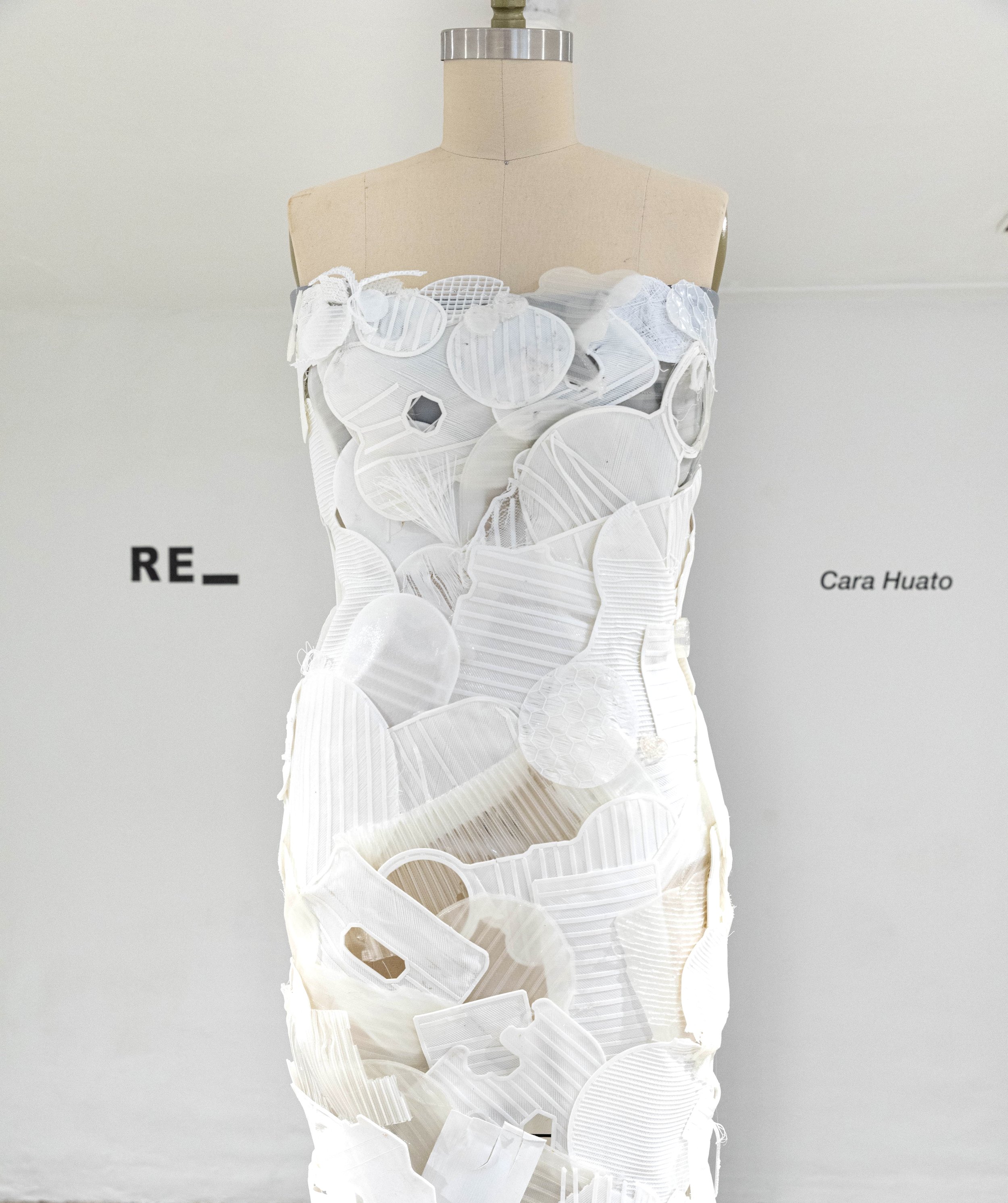
RE_
USE
CYCLE
ITERATE
-
Throughout this process, I was thinking a lot about the social construction of industry niches and how we can challenge and even improve our practices, sustainability, and overall production methods by not conforming to these traditional boundaries. I hope this piece can be seen as an argument between industry, sustainability, art and design.
-
In this exhibition I explore the possibilities of utilizing industrial 3D printing techniques to produce a fashion piece. The garment is made from one six part 3D printed bodice designed to prove the concept of 3D printed clothing. The rest of the piece is made from recycled 3D prints that were thrown out over the course of the year at the Polymer Lab.
-

I wanted to use this method to prove that recycling and sustainability practices tend to not look like the common green washing terms we visualize. This piece is made from 100% plastic, a material that is typically not seen as “sustainable”, however in this context I would argue this piece utilizes all the main sustainability tactics that are encouraged in the fashion and industrial design industries.

3D Printing & Fashion
3D printing has the potential to reduce waste in the manufacturing process by allowing companies to create products it allows for precise control over the production process, and can help to reduce the amount of material that is wasted due to defects or imperfections. 3D printing has been making inroads in the fashion industry in recent years.
However, 3D printing also has the potential to create waste in other ways. For example, the plastic or other materials used in 3D printing can create waste if they are not properly recycled. Additionally, 3D printing can generate significant amounts of fine particle pollution.
This project was an opportunity for me to experiment with 3D printing and modeling clothing while also experimenting with recycling techniques and up cycling of 3D printed materials.

3D Printed Buster
-
CAD Model
I modeled this torso of my dress form and the bustier in rhino. Printed in PLA, with eylets that I laced with filament.
-

3D Printed Bustier
Fitting took two tries, I originally had gaping and ended up doing two prints of the bustier for fittings.
-

Joining
Joining the bustier with the recycled materials was done with as little adhesive as possible, mainly using a heat gun, and hot glue where needed.
-

Re_use + cycle
This final exhibition piece






